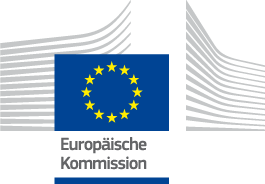

Good Practice Project
After many years of farming fish in the Baltic Sea, Pecka Nygård realised that the process was damaging to the environment and decided instead to produce fish alongside vegetables in an on-land circular cultivation system. The challenge was to create an innovative system which allows this process of aquaponics, the simultaneous farming of fish and plants, to take place on a larger scale.
Pecka started the project as a hobby, with a small greenhouse. He tried several different fish species and cultivated plants from melons to spices. He teamed up with some students and staff from a nearby Agricultural College to obtain LEADER funding from the Höga Kusten LAG for some of the tests. The LAG also supported some experiments with the production of biofuel from algae. The emerging aquaponic system gave good quality products and the fish population remained healthy over the years, due largely to the bio-beds’ ability to quickly break down unwanted foreign organisms and bacteria. However, to ensure economic viability on a larger scale, the system needed to be tested in a commercial production unit to evaluate different production methods, species and techniques to garner the best economic results.
After many years of testing, the company (Peckas Naturodlingar AB) has built a large-scale facility for the cultivation of tomatoes and rainbow trout. Rainbow trout is a long-established food source in the area and tomatoes are among the most popular vegetables. The new system will be implemented in a 4km2 greenhouse with a yearly production of 20 tonnes of fish and 200 tonnes of tomatoes. The water from the large fish tanks is filtered into the tomato beds where it is purified by the roots before being recirculated back into the fish tanks. The heating of the greenhouse is mainly supplied by renewable energy. The system requires no chemical controls or antibiotics; any biological problems that arise in the greenhouse can be combated with organic methods such as the introduction of insects.
The successful production of vegetables and fish in an aquaponics system without any nutrient leakage to the environment is a step towards a more sustainable food production. The aim is now to franchise this aquaponics system across Sweden. The project led to the launch of the company, Peckas Naturodlingar AB, which has created eight jobs. There is already a growing interest in the system from new investors.
Seed money to trial aquaponics is potentially of interest to many FLAGs across Europe and indeed, Pecka’s model is already being franchised in several locations. However, those interested in duplicating the model will have to test the technology and establish what crops are most appropriate for their areas. Deciding on the fish species used is also fundamentally important, as is identifying an optimal water tank temperature and being able to sell the fish at a good price.
While aquaponics has been tried in multiple locations, only a few of them have reached commercialisation. A key lesson learned from this project is that the main production of an aquaponics system is vegetables, so selecting a product with a large demand, such as tomatoes, is essential. It is an added value that the system is circular and also produces fish, making it possible to achieve a higher combined price for the two products. It is also important to establish and develop distribution channels and logistics at an early stage of the project.
Two grants from the Höga Kusten LAG (2007-13 period): ca. €15 000 and ca. €90 000 to cover some of the costs of the initial tests
More recently, the company received support from EAFRD and the European Innovation Partnership (EIP AGRI).
Total investment cost from 2016-2018: approximately €900 000.
| Timeframe of implementation | From Jan 2016 to Jun 2018 |
|---|---|
| Sea Basins |
|
| Type of area |
|
| Theme |